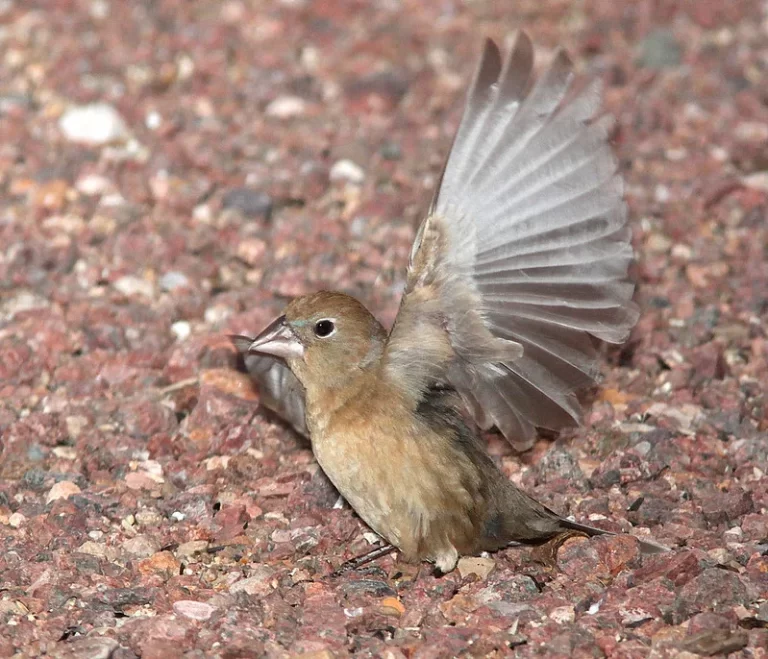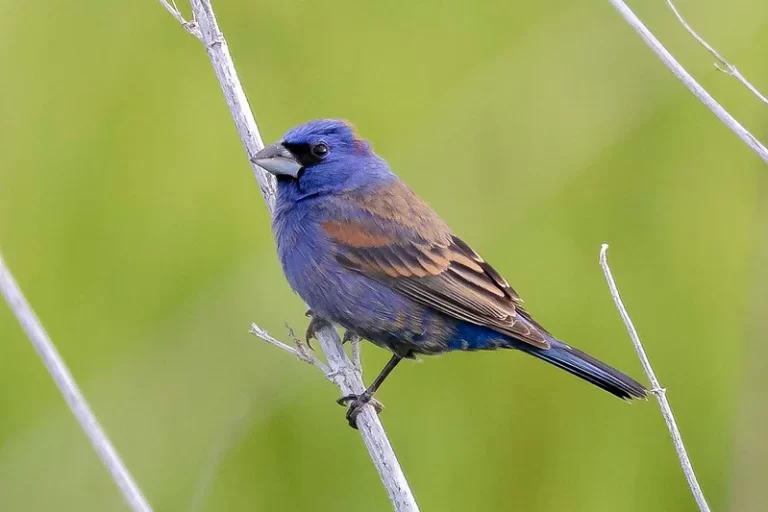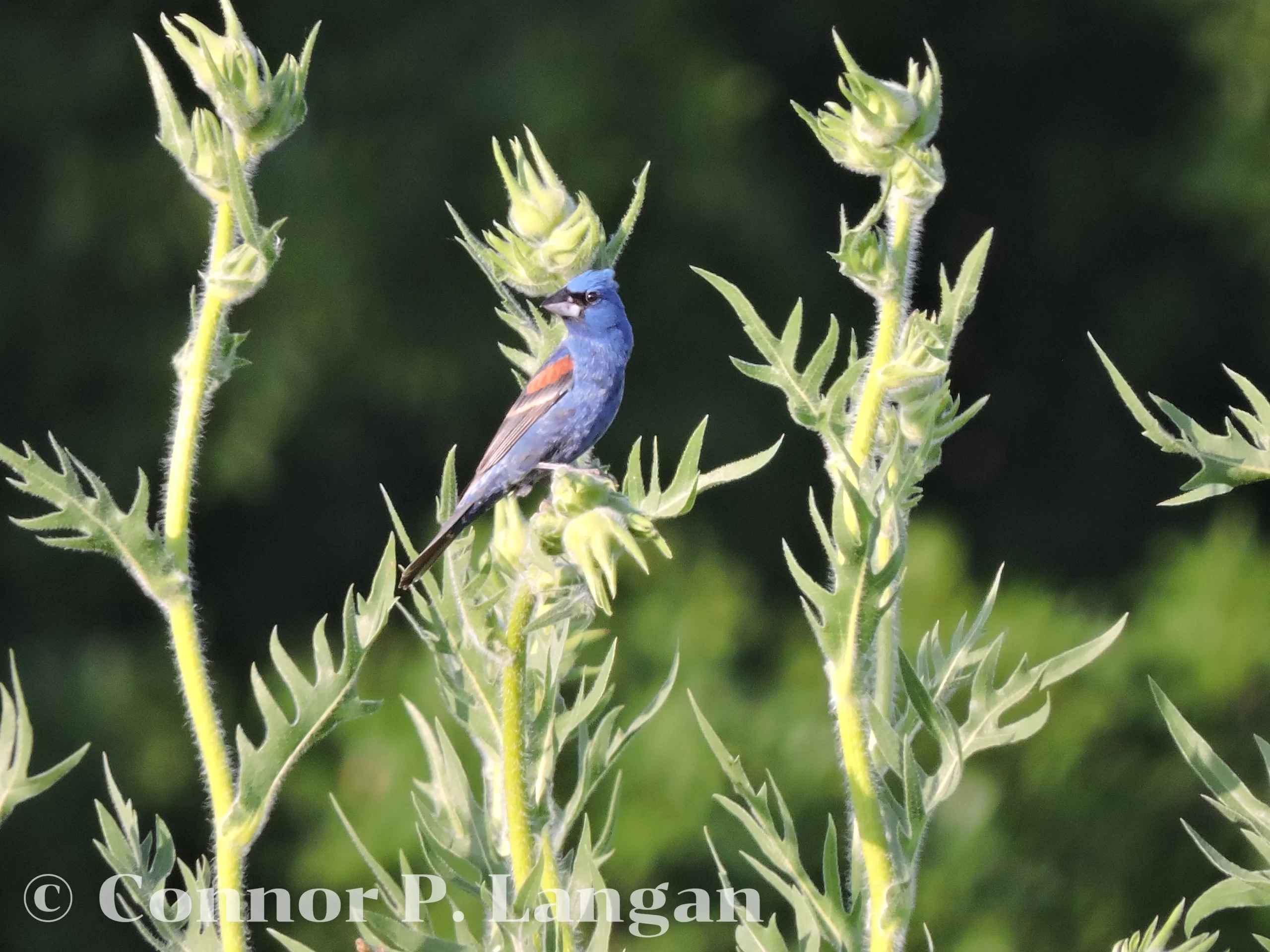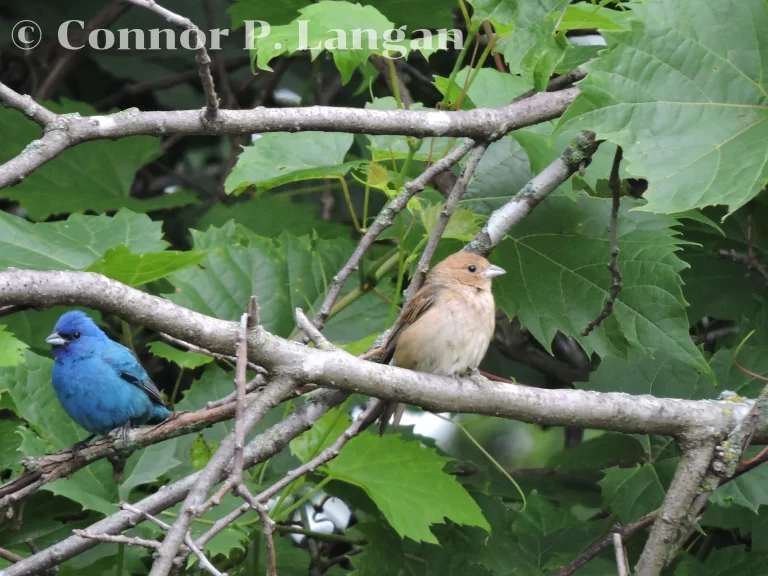Description
Blue Grosbeaks are medium-sized grosbeaks with massive beaks and fairly long tails.
These birds measure around 6 inches in length, while they may weigh 0.9 to 1.1 ounces.
Males feature the namesake rich blue color. The chestnut color on the wings of these birds is the only color other than blue that can be found on male Blue Grosbeaks.
Females are also largely one color overall, being primarily green-brown. These birds lack any streaking on their underparts.
Immature males look the same as adult females.
Meanwhile, males in nonbreeding plumage lose some of their blue coloration, as it is replaced by more cinnamon coloration.
Behavior
Blue Grosbeaks are not as aggressive as other grosbeak species when it comes to defending their territories. Males arrive at the breeding ground earlier than females, and they may even forage with one another until females arrive.
Though males are stunning with their blue colors, these birds may be difficult to find when singing on their territory.
Blue Grosbeaks tend to arrive late to their breeding territories. In fact, some Blue Grosbeaks may not arrive at their breeding grounds until well into the summer.
Blue Grosbeak Diet
Blue Grosbeaks eat a substantial amount of insects during the breeding season. Though insects make up the bulk of their diet at this time of year, they also eat seeds and berries.
In the nonbreeding season, these birds may switch to a diet that is primarily seeds.
Habitat
Blue Grosbeaks seek out early successional habitats during the breeding season. Therefore, fallow fields, windbreaks, water corridors, and forest edges may be ideal for this species. Blue Grosbeaks seem to favor habitats in which a canopy has not been established.
In the winter, these birds seek out similar habitats to the ones that they use during the breeding season.


Range
Blue Grosbeaks breed throughout all of the southern United States. Additionally, these birds breed throughout most of the Great Plains of the United States, though they are absent from Canada. This species has been spreading northward into parts of the Midwest in recent decades.
Blue Grosbeaks may be found year-round in parts of Mexico and Central America. In the winter, these birds travel to Mexico, Central America, or the Caribbean.
Breeding
Blue Grosbeaks are socially monogamous, with birds finding new mates each year. Males sing repetitively to establish and defend their territories.
Females seem to do most of the nest construction, with males more focused on singing. These birds seek out small trees or shrubs as areas in which to place their nests. Nests are not located far from the ground.
Blue Grosbeaks create cup-shaped nests that are tidier than those of other grosbeak species. Females build nests out of tree bark, twigs, grasses, and other plant fibers. The interior of the cup is lined with soft materials such as grasses and mammal fur.
Between 1 to 2 broods of eggs are laid by females each year. The typical clutch size of a Blue Grosbeak total 3 to 5 eggs. It takes just shy of 2 weeks for eggs to hatch, with the young leaving the nest 9 to 10 days later.
Backyard Birding
Blue Grosbeaks may visit bird feeders, but they are not as likely to do so as other grosbeak species. These birds will not nest in birdhouses. Therefore, a backyard birder’s best bet for attracting this species would be to place bird feeders and bird baths around their property.
Blue Grosbeak Population Status
Though this species has a sizable range, it is an uncommon species that is never abundant. Nevertheless, populations of Blue Grosbeaks have increased slightly in the past half-century. This species has a total population of around 35 million birds.
Blue Grosbeak Facts
- Although Blue Grosbeaks are known to nest in trees, there is at least one observation of these birds nesting in birdhouses.
- Extra-pair copulations are common in Blue Grosbeaks, with one study finding that 53% of nests had young sired by a male other than the female’s mate.
- The time a male Blue Grosbeak spends guarding his mate depends on the quality of neighboring males. The more vibrant blue the neighbors, the more time a male spends guarding a female.


